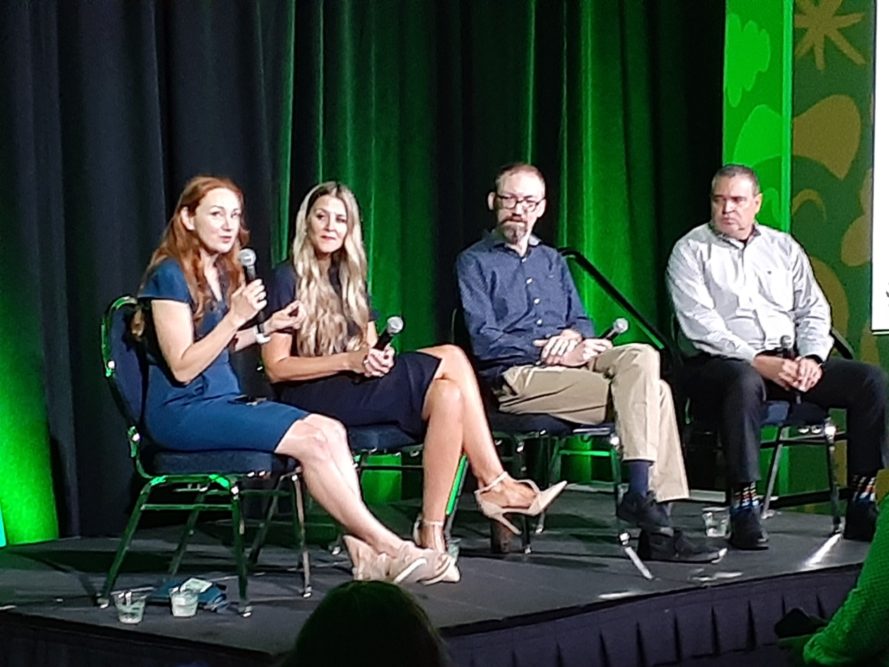ANAHEIM, CALIF. — When it comes to packaging, the fresh produce industry has one eye on the present, one on the future.
Both are crucial to ensuring that government-mandated, supplier and retailer sustainability goals are met, according to industry experts speaking at an Oct. 19 panel at the International Fresh Produce Association’s annual convention.
Speaking with an eye on the future, John Paap, sustainability and brand marketing manager for leading fruit importer Jac Vandenberg Inc., compared the search for the best produce packaging solution with the United States’s quest in the 1960s to put a man on the moon.
Paap’s idea of the moonshot is a world in which produce packaging is “in balance with nature” — completely sourced by natural products, and 100% returnable to nature after its use.
“Regenerative,” not “sustainable,” should be the operative word in that quest, Paap said.
“It’s a journey, and we should expect that we’re not going to find the solution right away.”
Meanwhile, in the “right away” of the present, the focus needs to be slightly different, said Jen Doxey, director of sales for Fox Packaging.
“Right now, the reality is not bio-based, the reality is plastic. We have to have tangible milestones to move forward.”
One of those milestones, she said, is California’s requirement that all packaging be recyclable within a decade.
While some customers are demanding bio-based right now, others are demanding recyclable plastic, Doxey said. It’s crucial to recognize that reality — and all realities when it comes to packaging and sustainability.
“It’s important that we be honest, and not trick people into thinking they’re getting something better, when they’re actually getting something worse.”
More and more consumers are demanding biodegradable packaging, said Rich Mendonsa, president of Mendonsa Consulting. But they’re often not realistic about the price tag.
“Consumers want everything, but they want it at no cost.”
PCR is in many ways the hot produce packaging material of the moment, but Doxey said it’s not a cure-all. PCR might be a good fit for some stages of a package’s lifecycle, but not others.
“It’s not enough just to check one box. You have to address its effects on the other (stages).”
In today’s packaging world, she added, a one-size-fits-all approach won’t work. PCR may be the answer for some commodities, but bio-based solutions like cellulose might be the answer for others.
Jac Vandenberg has had success recently with cellulose packaging for citrus, which has a reputation for being hard to package in recyclable materials, Paap said.

